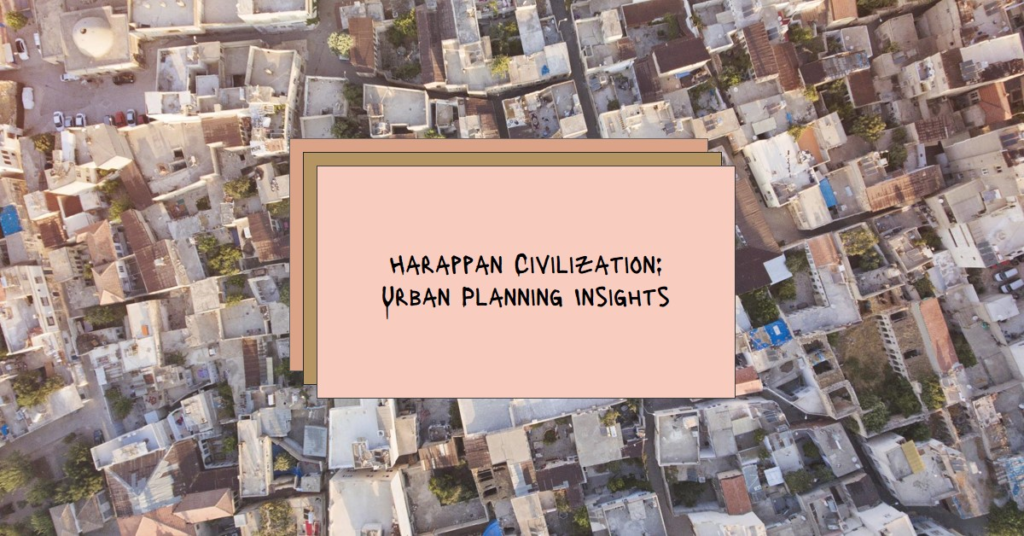
Table of Contents
- Introduction: A Glimpse into Harappan Civilization
- The City Layout: A Grid System Ahead of Its Time
- Advanced Water Management: Wells, Drains, and Baths
- Residential Architecture: Standardization and Privacy
- Public Buildings and Granaries: Centers of Administration and Economy
- Trade and Commerce: The Lifeblood of Harappan Cities
- Social Organization: Class and Community in Urban Spaces
- Religious and Cultural Spaces: Integrating Belief and Daily Life
- Legacy and Lessons: Harappan Urban Planning in Modern Context
- Conclusion: Celebrating the Ingenious Urban Planners of the Past
Introduction: A Glimpse into Harappan Civilization
The Harappan Civilization, also known as the Indus Valley Civilization, stands as one of the most remarkable ancient civilizations. Flourishing around 2500 BCE, this civilization spanned regions that are now part of Pakistan and northwest India. Renowned for its advanced urban planning, the Harappan Civilization offers invaluable insights into early human ingenuity in city design and infrastructure.
The study of Harappan urban planning reveals a sophisticated understanding of spatial organization, water management, and social structure. This article delves into the key aspects of Harappan urban planning, highlighting its historical significance and the lessons it holds for contemporary urban development.
The City Layout: A Grid System Ahead of Its Time
One of the most striking features of Harappan cities was their grid-based layout. Cities like Harappa, Mohenjo-Daro, and Dholavira were meticulously planned with streets laid out in perfect north-south and east-west orientations. This systematic approach facilitated efficient movement and organization within the cities.
The grid system not only enhanced accessibility but also promoted the logical division of residential, commercial, and public areas. Major roads were often wider and intersected at right angles, while narrower lanes provided access to individual dwellings. This level of planning demonstrates a remarkable foresight in urban design, reflecting an advanced understanding of spatial dynamics.
Advanced Water Management: Wells, Drains, and Baths
Water management was a critical aspect of Harappan urban planning. The civilization showcased an impressive array of water-related infrastructure, including wells, drainage systems, and public baths. Every house had access to water through private wells, which was a testament to the civilization’s commitment to hygiene and public health.
Moreover, the Harappans engineered an elaborate drainage system that ran alongside streets. These covered drains, often made of brick, were designed to carry waste water away from residential areas, preventing contamination and disease. The Great Bath of Mohenjo-Daro, a large public bathing structure, further exemplifies the importance placed on cleanliness and ritualistic practices.
Residential Architecture: Standardization and Privacy
Harappan residential architecture reflected a high degree of standardization and attention to privacy. Houses were built using baked bricks of uniform size, indicating a standardized production process. The use of standardized bricks not only ensured structural integrity but also facilitated efficient construction.
Homes typically featured courtyards, which provided natural light and ventilation. This design promoted comfort in the hot, arid climate of the region. Additionally, houses were often multi-storied with flat roofs, showcasing advanced engineering skills. Importantly, the layout of homes ensured privacy for inhabitants, with inward-facing rooms and minimal external openings.
Public Buildings and Granaries: Centers of Administration and Economy
Public buildings and granaries in Harappan cities highlight their administrative and economic sophistication. Large public structures, such as assembly halls and granaries, were strategically located and robustly built. These buildings likely served as centers for administrative activities and storage of surplus produce.
Granaries, in particular, were critical for the civilization’s agrarian economy. Their presence indicates a well-organized system for the collection, storage, and distribution of food resources. The ability to store surplus grain ensured food security and facilitated trade, both within the civilization and with distant regions.
Trade and Commerce: The Lifeblood of Harappan Cities
Trade and commerce played a pivotal role in the prosperity of Harappan cities. Archaeological evidence points to a thriving trade network that extended to Mesopotamia, Central Asia, and the Persian Gulf. The standardized weights and measures found in Harappan sites underscore the importance of trade in their economy.
The strategic location of Harappan cities along rivers and trade routes further facilitated commerce. The presence of docks and warehouses in coastal cities like Lothal indicates a vibrant maritime trade. The exchange of goods, ideas, and technologies with other civilizations highlights the interconnectedness of the ancient world and the Harappans’ role in it.


Social Organization: Class and Community in Urban Spaces
The urban planning of the Harappan Civilization reflects a highly organized social structure. The division of cities into well-defined residential and public areas suggests a clear delineation of space based on social and functional roles. The presence of large, well-built homes alongside more modest dwellings indicates a degree of social stratification.
However, the uniformity in house construction and the provision of amenities such as private wells and bathrooms in all homes point to a relatively egalitarian society. This balance between social stratification and egalitarianism in urban spaces highlights the Harappans’ ability to maintain social cohesion within a complex urban environment.
Religious and Cultural Spaces: Integrating Belief and Daily Life
Religious and cultural spaces were integral to Harappan urban planning. The Great Bath of Mohenjo-Daro, for example, is believed to have had religious significance, possibly serving as a site for ritual purification. Similarly, the presence of fire altars and other ritualistic structures in various cities points to the importance of religion in daily life.
Cultural artifacts such as seals, figurines, and pottery found in residential and public areas also provide insights into the Harappan belief system and artistic expression. These artifacts suggest a rich cultural life that was seamlessly integrated into the urban fabric, reflecting the civilization’s holistic approach to city planning.
Legacy and Lessons: Harappan Urban Planning in Modern Context
The urban planning principles of the Harappan Civilization offer valuable lessons for contemporary urban development. Their emphasis on hygiene, efficient infrastructure, and social organization remains relevant today. Modern cities can draw inspiration from the Harappans’ approach to water management, waste disposal, and residential privacy.
Furthermore, the Harappans’ ability to balance social stratification with communal amenities provides a model for creating inclusive urban spaces. As contemporary cities grapple with issues of overcrowding, pollution, and resource management, the ancient wisdom of the Harappan Civilization serves as a guiding beacon for sustainable urban planning.
Conclusion: Celebrating the Ingenious Urban Planners of the Past
In conclusion, the urban planning of the Harappan Civilization stands as a testament to early human ingenuity and foresight. Their well-planned cities, advanced water management systems, and organized social structures highlight a civilization that was ahead of its time. By studying and appreciating the urban planning achievements of the Harappans, we gain not only historical insights but also inspiration for addressing the urban challenges of the present and future.
The Harappan Civilization’s legacy is a reminder of the enduring human quest for creating harmonious and sustainable living environments. As we navigate the complexities of modern urban life, let us look back to these ancient urban planners for lessons that transcend time and continue to inspire.


